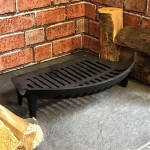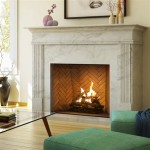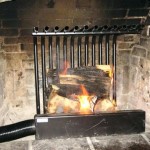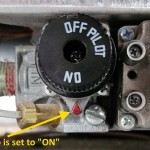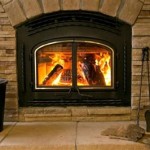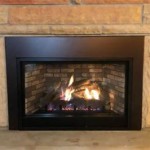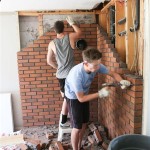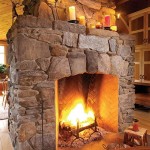Selecting the Optimal Television for Installation Above a Fireplace
Mounting a television above a fireplace has become a popular aesthetic choice in many modern homes. This configuration offers a centralized entertainment hub, consolidating viewing and potentially saving space. However, careful consideration must be given to the various factors that impact picture quality, ergonomics, and the long-term health of the television itself. The elevated heat, non-optimal viewing angle, and potential for glare all present challenges that must be addressed when selecting the ideal television for above-fireplace installation.
Understanding the Challenges of Above-Fireplace Television Placement
The primary challenges associated with placing a television above a fireplace stem from the elevated heat exposure, the inherent viewing angle, and ambient light conditions. Each of these factors requires careful assessment to mitigate potential negative impacts.
Heat Exposure: Fireplaces, whether wood-burning, gas, or electric, generate significant heat. While newer electric fireplaces may produce less radiant heat, traditional fireplaces can release substantial warmth directly upward. Excessive heat exposure can damage sensitive electronic components within the television, potentially shortening its lifespan and impacting performance. The prolonged exposure to high temperatures can cause degradation of the LCD panel, leading to discoloration, pixel failure, and an overall reduction in picture quality. Furthermore, heat can weaken solder joints and other internal connections, resulting in premature failure.
Viewing Angle: Placing a television high above a fireplace often necessitates viewers tilting their heads upwards to watch. This unnatural posture can lead to neck strain, discomfort, and even long-term musculoskeletal issues. The optimal viewing angle for a television is generally considered to be at eye level when seated. Deviating significantly from this angle can distort the perceived image and reduce viewing comfort, especially during extended viewing sessions.
Glare: Fireplaces are frequently located in living rooms that feature large windows or glass doors. This can result in significant glare on the television screen, particularly during daylight hours. Glare can obscure the image, making it difficult to see details and reducing overall picture quality. The type of screen technology employed by the television significantly impacts its ability to handle glare effectively. Glossy screens are more susceptible to glare than matte screens, requiring additional measures to minimize reflections, such as utilizing anti-glare films or controlling ambient light.
Key Specifications to Prioritize in a Television Intended for Above-Fireplace Installation
When selecting a television for placement above a fireplace, several key specifications should be prioritized to mitigate the challenges outlined above. These specifications include screen technology, brightness levels, viewing angles, and anti-glare capabilities.
Screen Technology (OLED vs. LED): OLED (Organic Light Emitting Diode) and LED (Light Emitting Diode) are the two dominant television screen technologies. OLED televisions offer superior contrast, black levels, and viewing angles compared to traditional LED TVs. They achieve this by individually illuminating each pixel, allowing for perfect blacks and exceptional color accuracy. However, OLED TVs are generally more expensive and may be more susceptible to permanent image retention (burn-in) if subjected to prolonged static images. LED televisions, on the other hand, are more affordable and typically offer higher peak brightness, which can be beneficial in rooms with high ambient light. Modern LED TVs often employ advanced technologies such as quantum dots and local dimming to improve contrast and color performance, bringing them closer to OLED in terms of picture quality. For above-fireplace installations, the choice between OLED and LED depends on the specific viewing environment, budget, and tolerance for potential burn-in.
Brightness Levels (Nits): Brightness, measured in nits (candelas per square meter), is a crucial factor, especially when dealing with ambient light. A television with a higher nit rating will be better equipped to combat glare and maintain picture clarity in a brightly lit room. For above-fireplace installations, a television with a peak brightness of at least 500 nits is generally recommended. Ideally, a television with 700 nits or more is preferable, particularly if the room receives a significant amount of natural light. Higher brightness levels ensure that the image remains visible and vibrant, even when the screen is subjected to direct or indirect sunlight.
Viewing Angles: Wide viewing angles are essential to ensure consistent picture quality for viewers seated at different positions within the room. Television panels based on VA (Vertical Alignment) technology typically offer better native contrast ratios but narrower viewing angles compared to IPS (In-Plane Switching) panels. IPS panels, on the other hand, provide wider viewing angles, ensuring that the image remains consistent even when viewed from off-axis positions. For above-fireplace installations, considering a television with an IPS panel or a VA panel with advanced viewing angle enhancement technology is advisable. This ensures that viewers seated on either side of the fireplace can enjoy a consistent and accurate picture.
Anti-Glare Capabilities: An anti-glare screen coating is a critical feature for televisions placed above a fireplace. Matte screen finishes are designed to diffuse reflected light, minimizing glare and improving image clarity. Glossy screens, while often offering more vibrant colors and deeper blacks, are more prone to reflections. If a glossy screen is preferred, consider using anti-glare film or strategically positioning curtains or blinds to minimize direct sunlight exposure. Some high-end televisions incorporate advanced anti-reflective coatings that significantly reduce glare without compromising picture quality. Investing in a television with effective anti-glare capabilities can dramatically improve the viewing experience in brightly lit rooms.
Mitigating Heat Exposure and Ergonomic Concerns
Beyond selecting the right television model, proactive measures should be taken to mitigate the risks associated with heat exposure and non-optimal viewing angles. These measures include installing a heat shield, adjusting the viewing angle with a tilting mount, and considering alternative placement options.
Heat Shield Installation: A dedicated heat shield can be installed above the fireplace to deflect heat away from the television. These shields are typically made of metal and are designed to create a barrier between the fireplace and the television. The heat shield should be properly sized to effectively cover the area above the fireplace and should be installed according to the manufacturer's instructions. The distance between the heat shield and the fireplace should be sufficient to prevent heat from reaching the television. This proactive measure can significantly reduce the potential for heat damage and extend the lifespan of the television.
Tilting Mount Adjustment: A tilting television mount allows for adjusting the viewing angle to improve ergonomics and reduce neck strain. The ability to tilt the screen downward can compensate for the elevated position of the television, bringing the image closer to eye level. Tilting mounts are available in various sizes and weight capacities, so it's essential to choose a mount that is compatible with the television model and the wall structure. When using a tilting mount, ensure that the television is securely fastened and that the tilt angle is adjusted to a comfortable viewing position. Regularly adjusting the tilt angle can further minimize neck strain during extended viewing sessions.
Alternative Placement Considerations: Before committing to placing a television above a fireplace, consider alternative placement options within the room. Mounting the television on a nearby wall or placing it on a credenza or entertainment center might offer a more optimal viewing experience. Evaluate the room layout, furniture arrangement, and viewing distances to determine the most ergonomic and visually appealing location for the television. In some cases, reconfiguring the room layout might be necessary to accommodate a more ideal television placement. Prioritizing ergonomics and picture quality over aesthetic appeal can significantly enhance the overall viewing experience.

Can I Mount My Tv Above The Fireplace

Matching Your Tv Size To Fireplace

Ortal S Innovative Technology Makes It Safe To Mount A Tv Above Your Fireplace

Putting A Tv Above The Fireplace May Not Be Such Bad Idea After All

Can I Mount My Tv Above The Fireplace

Should I Have A Tv Over The Fireplace Klimmek Furniture

ᑕ❶ᑐ What To Consider Before Mounting A Tv Above Fireplace

Should You Mount Your Tv Above A Fireplace Digital Trends

A Tv Over The Fireplace Design Yes Or Major No

Safely Mount A Tv Above An Electric Fireplace Touchstone Home S Inc

